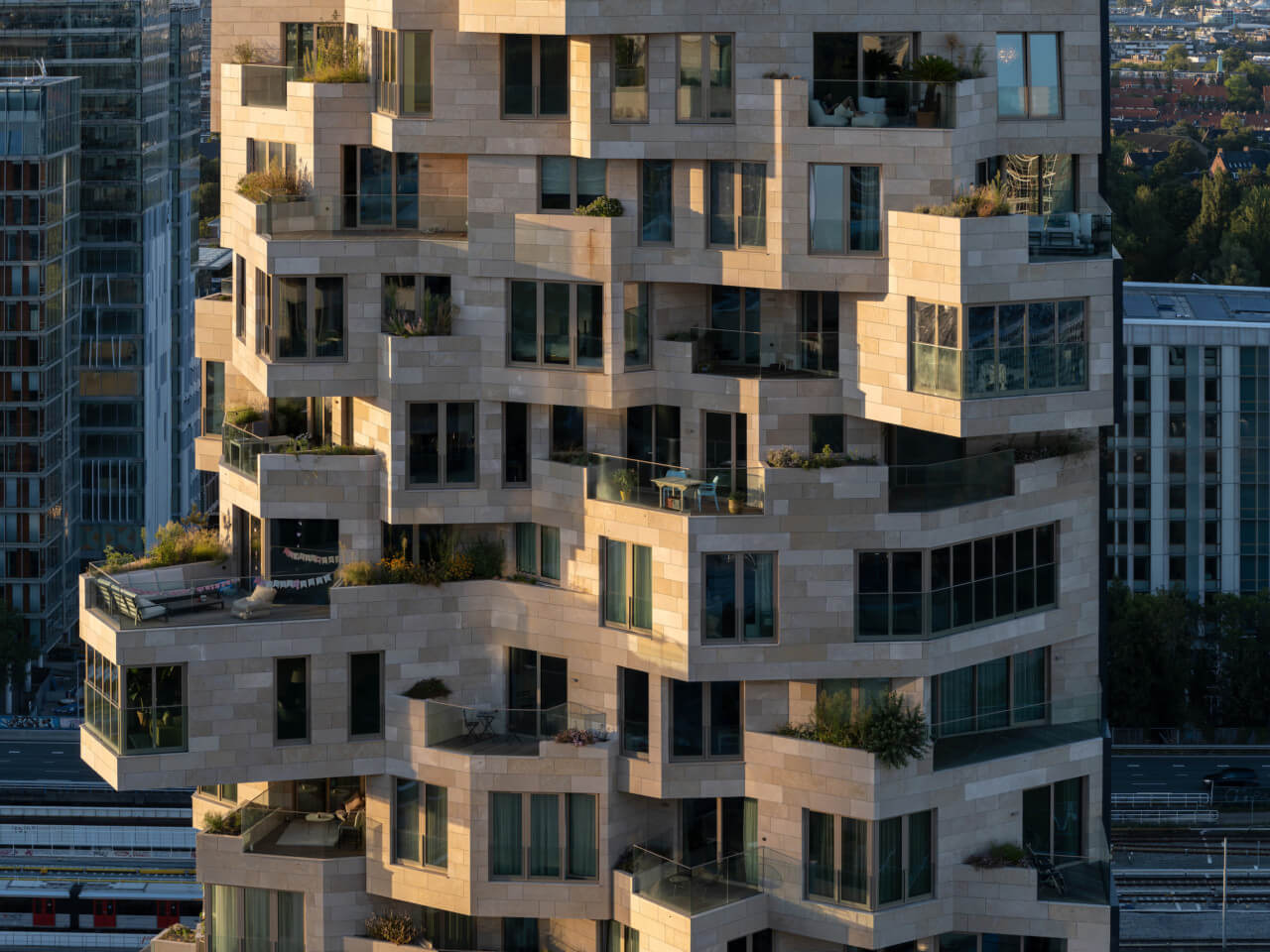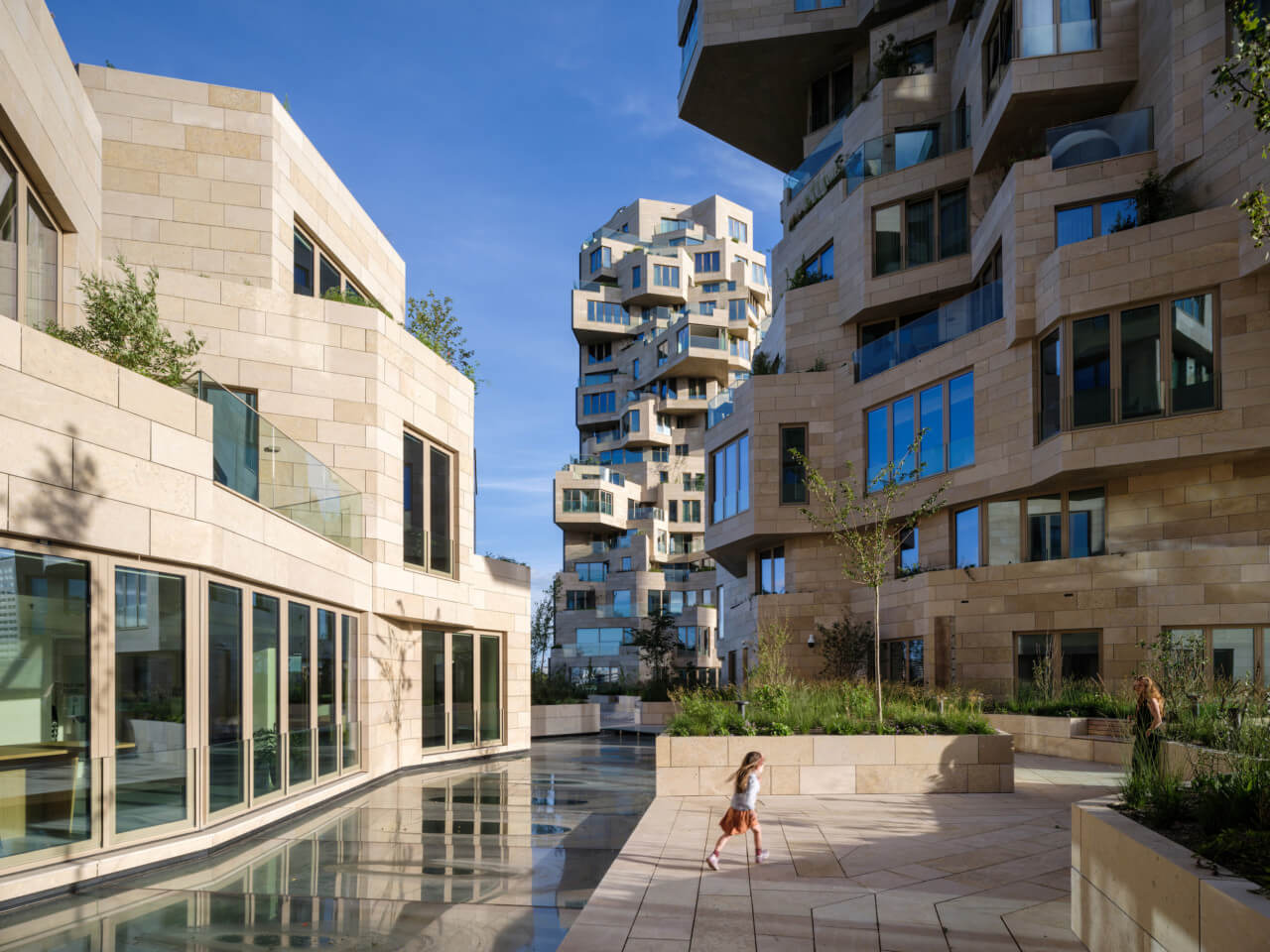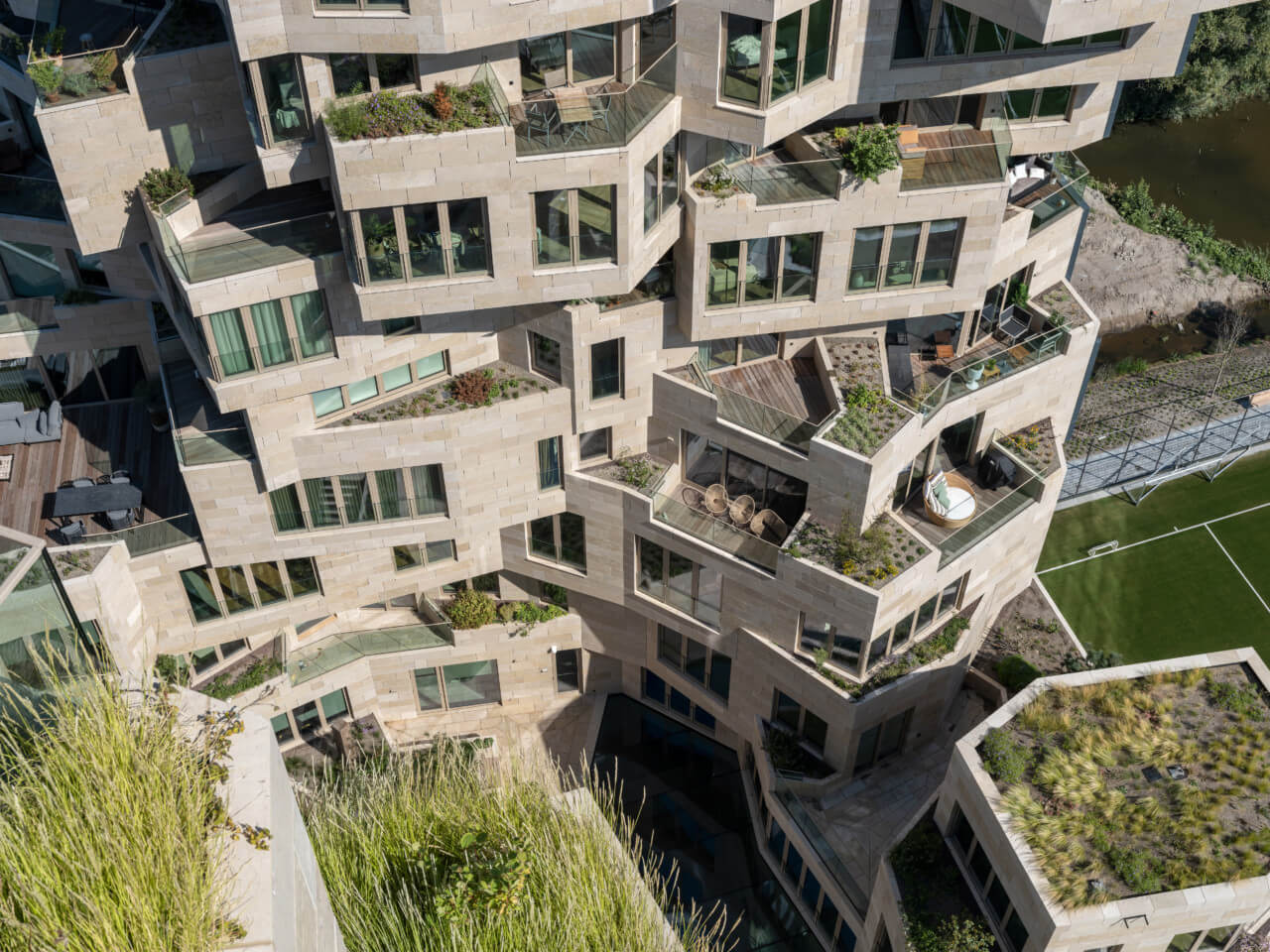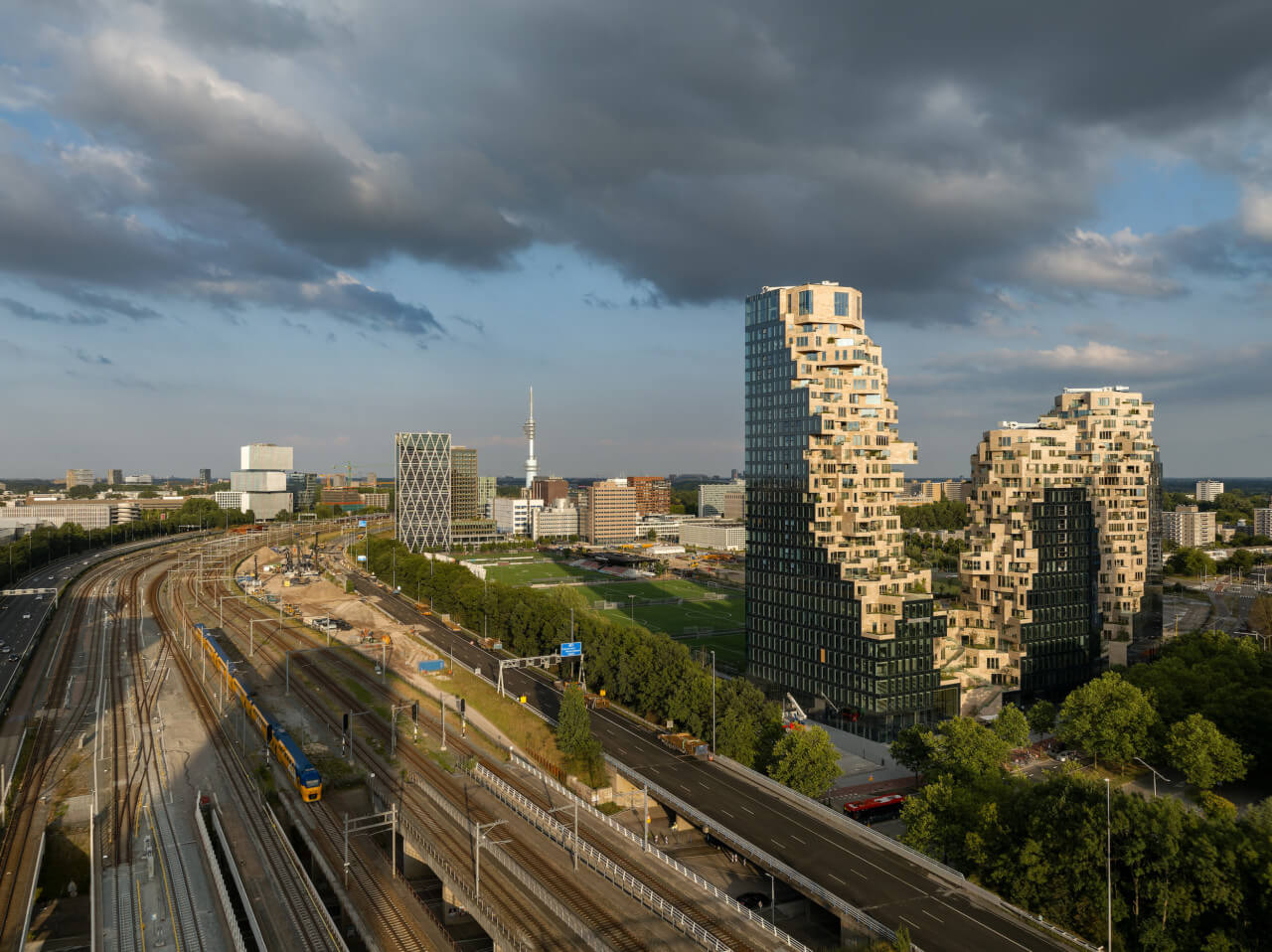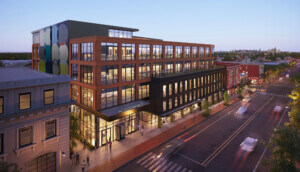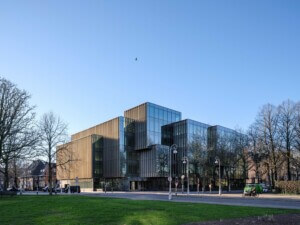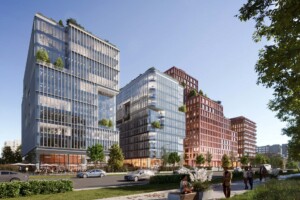While mountains are typically shaped and formed over the span of eons, a new range has risen in the pancake-flat Netherlands in just four short years.
The last AN checked in with Valley, Rotterdam-based MVRDV’s roughly 810,000-square-foot mixed-use development comprised of three jagged towers clad in stone and mirrored glass and shrouded with bountiful vegetation wasn’t quite yet complete. As of last Friday, however, “the geology-inspired” complex towering over the A10 ring road in Amsterdam’s shiny, modern Zuidas financial district is fully open and occupiable (and freshly photographed) following a grand opening ceremony hosted by building owner RJB Group of Companies and project developer Edge.
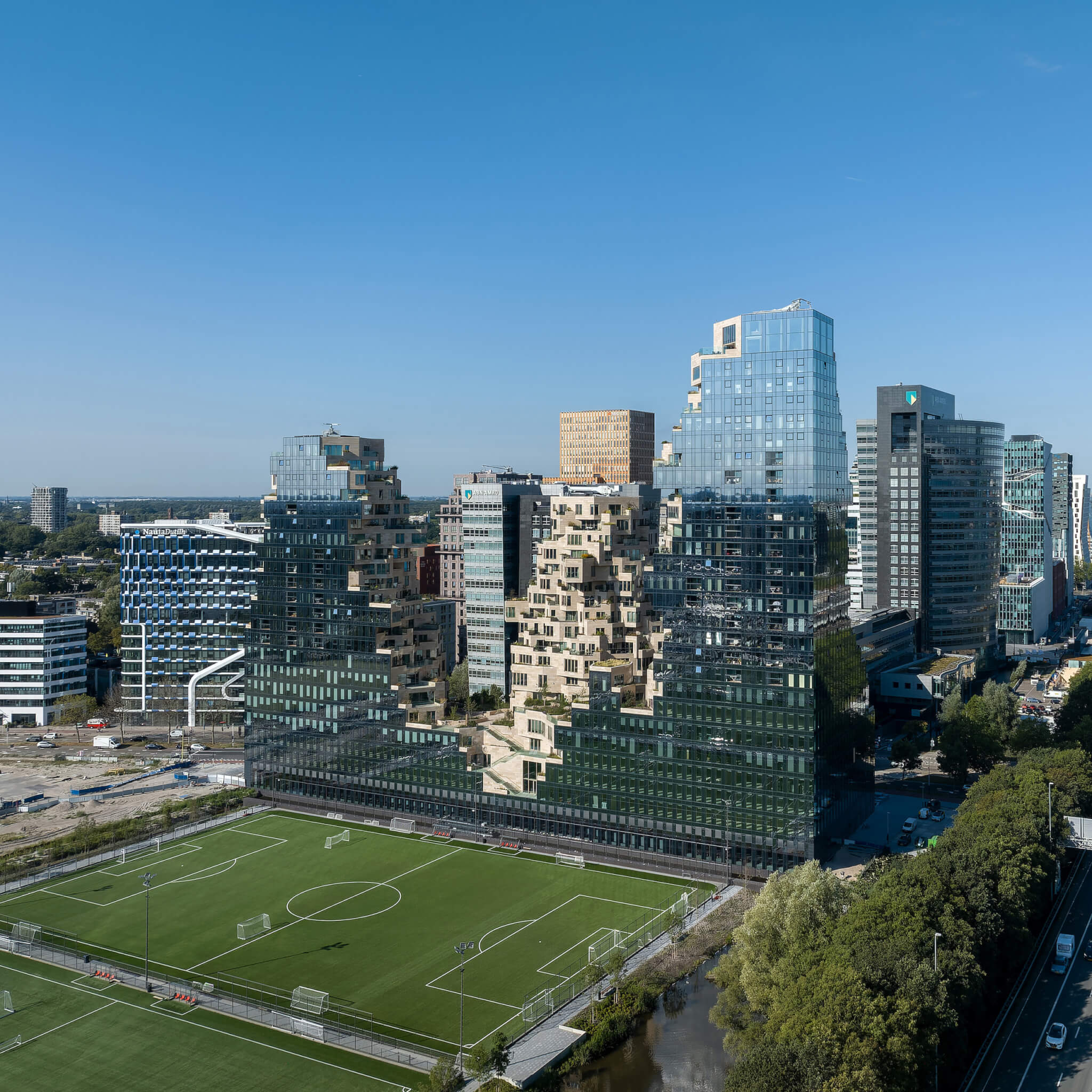

Said MVRDV founding partner Winy Maas in a statement:
“How do you make an office district liveable? What should the homes be like? What else is needed? Those were the questions we started with when we designed Valley. Instead of a one-note business centre, this site along Beethovenstraat in Amsterdam is now a symphony of life – people working, yes, but also barbecuing on their terraces, visitors relaxing in the valley, shopping in the grotto, eating dinner by the street, and even the window cleaners and the gardeners scaling the heights above. Valley is a first step towards transforming this part of Amsterdam into a greener, denser, and more human city.”
Per MVRDV, Valley, the result of an “utterly bespoke” design and construction process, aims to “bring a green and human dimension back to the inhospitable office environment” with 198 cantilevered rental apartments spread across the upper floors of the trio of craggy towers rising approximately 220, 266, and 328 feet tall. (Heyligers Architects helmed the interiors). Office space is distributed throughout the lower levels of each tower with a skylight-illuminated public atrium dubbed the Grotto linking each of the towers at ground level. Featuring natural stone flooring, walls, and ceilings, the materiality of the Grotto matches that of the towers and the “valley” between them, making “clear that all the public areas of the building are part of the same apparently geological formation,” explained MVRDV in a press announcement.
For those looking to take in sweeping views from atop the tallest of the stony formations, Valley boasts a “sky bar” on the 26th and 27th floors of the north tower that’s open to the public and accessible via a ground floor retail space populated by Italian luxury stove brand Molteni. Joining the Molteni flagship in the three-level, podium-anchoring atrium are a range of retail shops, eateries, coffee shops, dedicated cultural space, and the forthcoming Sapiens, a museum-slash-laboratory-slash-workshop where “science, government, business and the arts will work together on projects that improve our planet.”
And since even alpine-inspired Dutch developments require sizable parking garages, a multi-level car park is buried beneath the complex. (Presumably, this includes bicycle-dedicated spaces aplenty.)
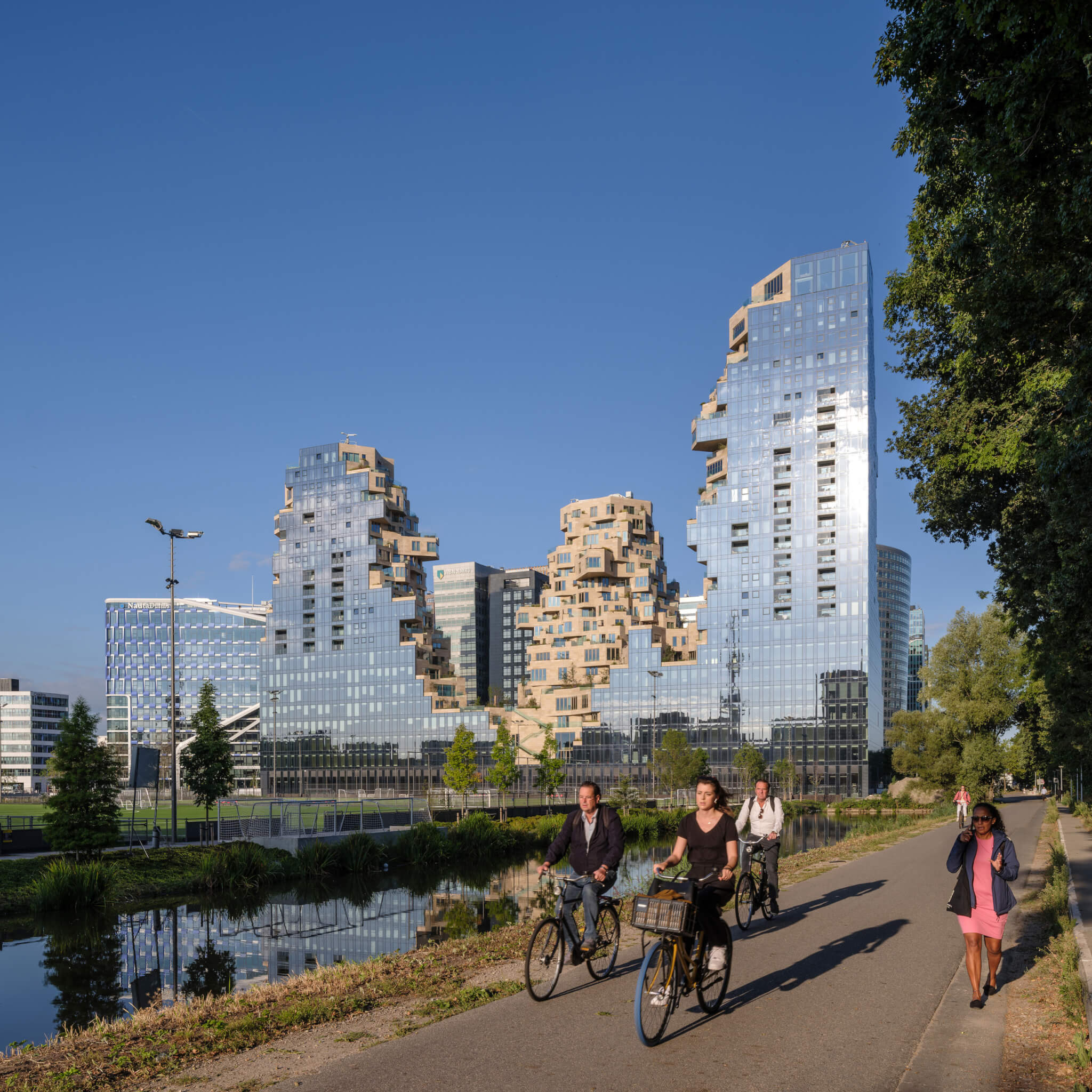
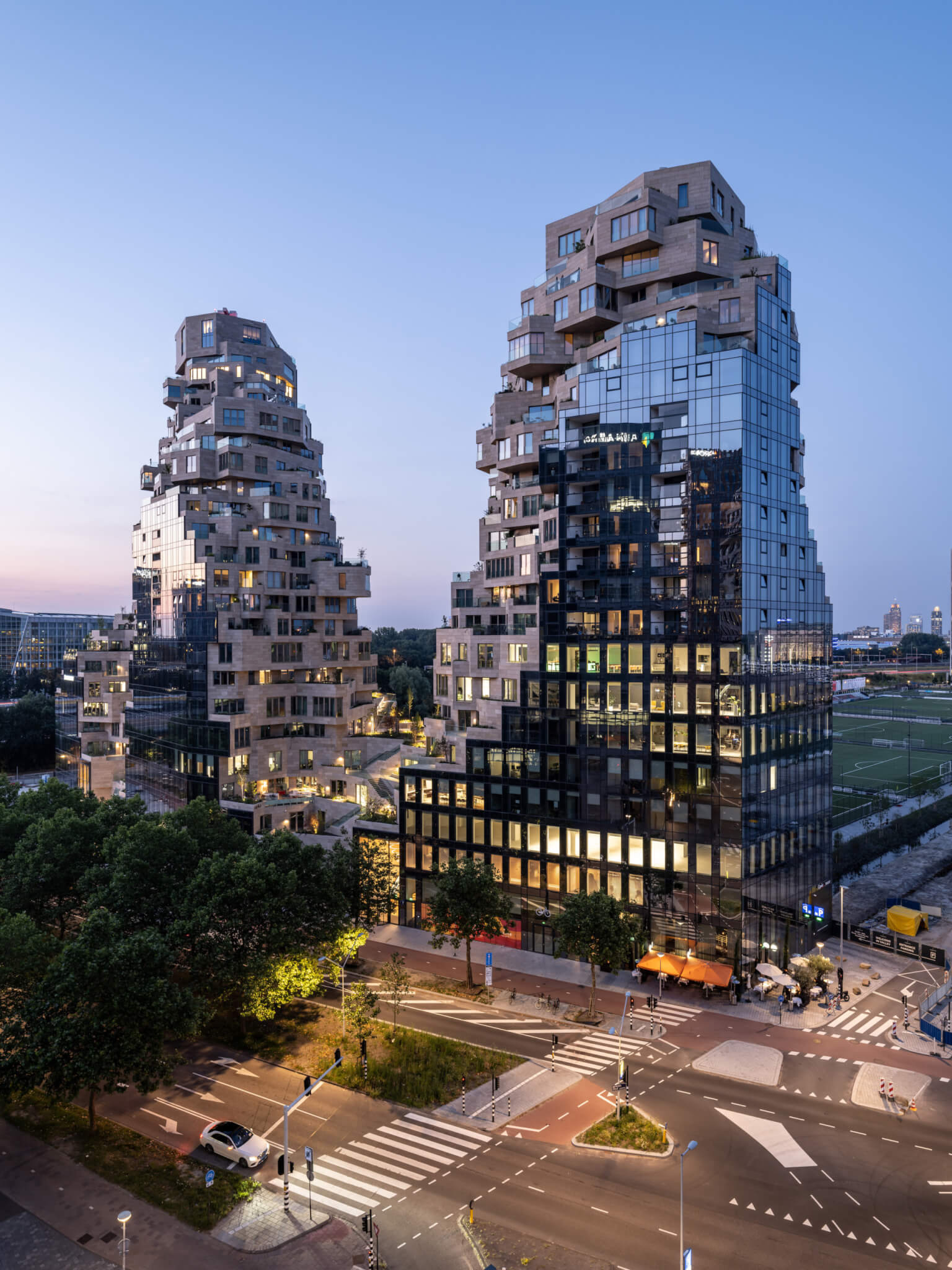
Valley is the first mixed-use development in the office tower–dominated Zuidas, a fast-growing business quarter in the south of Amsterdam near Schiphol Airport populated by a numerous corporations, banks, law offices, and the World Trade Center Amsterdam. The district is currently undergoing dramatic change as the so-called ZuidasDok infrastructural project—one of the largest in the Netherlands—moves full-steam ahead with plans to significantly expand the Amsterdam Zuid railway station and partially tunnel the A10 ring road.
As for the development’s greenery-engulfed namesake feature, the Piet Oudolf–designed landscape stretches between the fourth and fifth floors of the towers and features more than 13,500 plants, shrubs, and trees with larger forms of vegetation—including 271 young trees and shrubs in total—filling out the exterior of the tower’s lower floors; smaller plants are found higher up in a series of stone plants jutting out from the building facade. Oudolf, a celebrated Dutch garden designer best known stateside for his work on the High Line, used a complex planting matrix to tackle the project, considering all-important factors such as wind, sunlight, temperature, and maintenance when deciding which plants should be planted where. In total 220 different plant species can be found at Valley, as can a slew of urban biodiversity-boosting features including bird and bat boxes and “hotels” for bees and other beneficial insects.
The landscape, which is open to the public and accessible from the street via winding, stair-heavy footpaths, is tended to by dedicated “facade gardeners” working in conjunction with an automatic irrigation system. “In the coming years, the building will mature into the lush appearance of the design team’s vision as the greenery continues to grow,” the firm pointed out (and wisely so after the Marble Arch Mound mess of last summer).
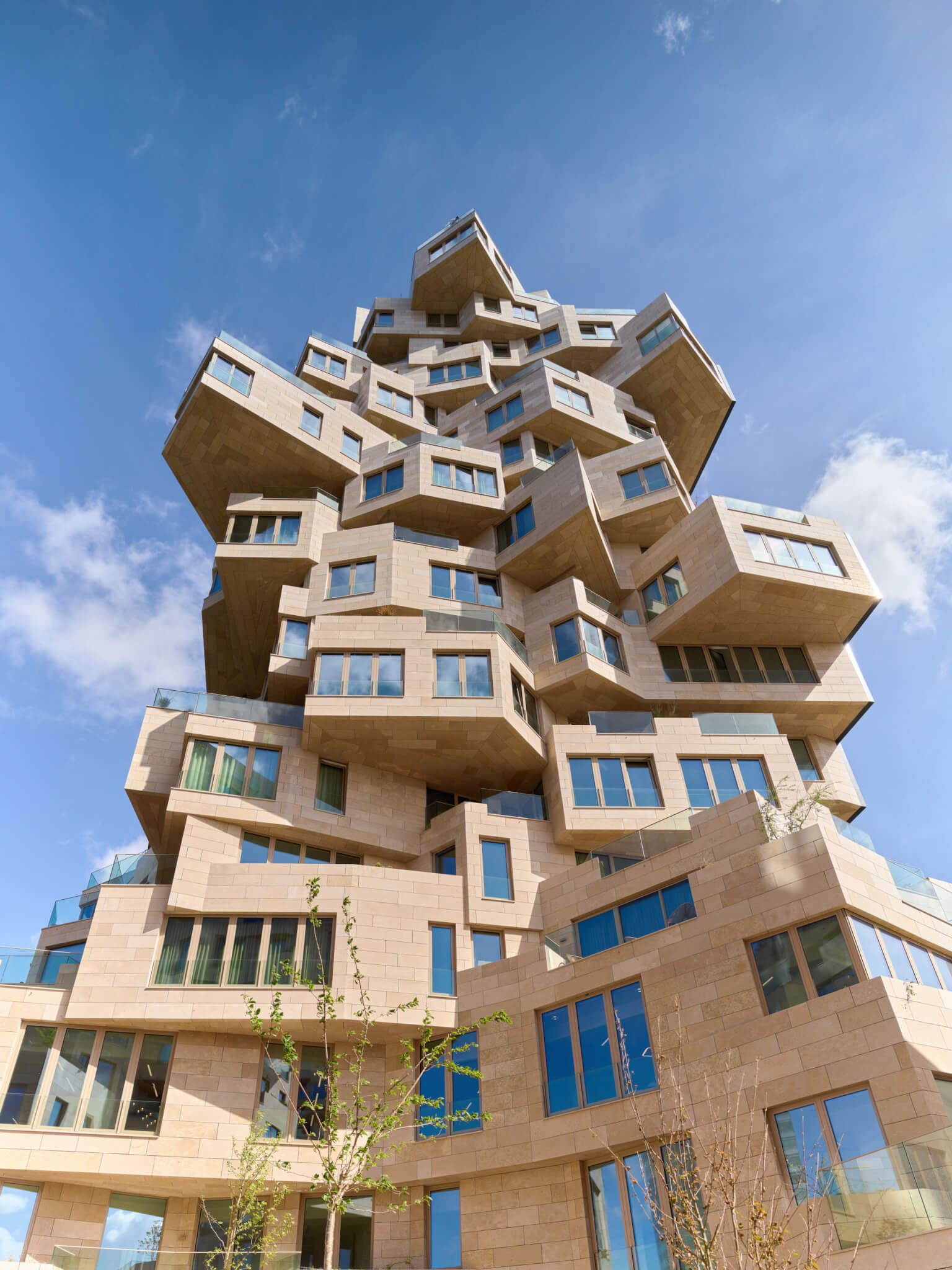
In addition to receiving high marks from sustainability certification programs including BREEAM-NL for the office element of the development, Valley has received a warm reception from the Dutch press, with Kirsten Hannema writing for de Volkskrant: “Once again, MVRDV shows that dream images can be made buildable. Using 3D software, in which the architects entered requirements with regard to daylight, view, cooling load and noise exposure, they ‘rationalised’ the design. The irregularly shaped facades eventually have about ten different angles, with the natural stone cladding fitted together like a puzzle.” You can read more about Valley’s singular terraced facade here.








